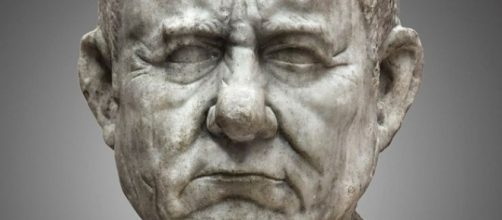What’s wrong with this story? Next month, Tomasso Brothers Fine Art out of London, billing themselves as specialists in “important” European sculpture, will present “Head of Juno,” a portrait bust carved from marble in Old Rome between the first and second centuries A.D. And they will be doing it with TEFAF, world-famous as the foremost art dealers of museum-quality antiques. Sounds good, doesn’t it?
Hard sell
Not if you count the scholarship of Sir Mortimer Wheeler, reputed to be England’s preeminent archaeologist, who wrote in his 1964 tome "Roman Art and Architecture" that the advent of portraiture was not only Old Rome’s principal achievement, but it also held sway over all the art history that followed.
And given these dealers’ creds, you’d expect their exhibit example to be “important,” too. But despite the press touting the quality of the carving – such as the highly-skilled rendering of eyebrows and curl of hair – none of that has anything to do with what makes Old Rome portraiture noteworthy.
Telling it like it is
And, according to Wheeler, the stone carvings of portraits in Old Rome were unflinching studies of people’s states of mind. And it all began with the custom of the making of death masks, which foretold the interest in the individual. By the end of the third century B.C., Roman portraiture had arrived and continued on for six more centuries, capturing the uniqueness of both men and women from Emperor to tradesmen.
A good example is that of an aging Roman Republican in the latter part of the first century bearings wrinkled skin and a grouchy face – a giant leap from the perfect form of the Greek ideal. One of my favorite examples of Old Rome’s interest in people rather than perfection is a detail from a bas relief at Ara Pacis of a small child looking up at a man next to him grabbing a handful of his toga, beseeching the man to pick him up.
Showing fear
Another goodie is a callously realistic portrait bust from the first century B.C. of an aging woman at the Museo delle Terme, showing thinning hair pulled tightly in a bun at the back of her head and anxious eyes looking warily to her side, as if expecting her end.
Good portraiture, then, is way more than physical appearance, and Old Rome showed the world how to do it.
Post script
Maybe the reason these artists from so long ago were good at portrait busts is because they put sculpture over all their arts – architecture, painting, pottery, and mosaics -- on a pedestal, so to say. They deemed it the highest form of art. And luckily, so much of their output, beginning with the 1st century, has survived. Sadly, these same artists get a bad rap in history books because they did a lot of copying from the ancient Greeks, but it should also be as well known that Old Rome's portrait busts were entirely their own.


